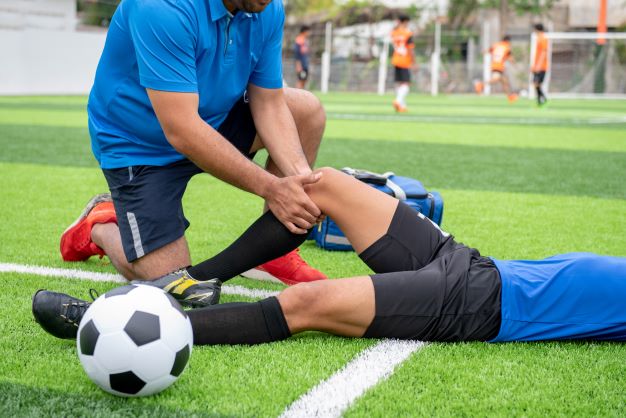Author: Erin Thomson
If you play sports or follow college and professional sports teams, you probably know concussions can be common and serious. Athletes suffer thousands of them each year, often in contact sports such as football, ice hockey, and soccer.

If you or your kids are active in sports, it’s important to know the signs of a concussion and when to seek medical help.
Symptoms can vary from person to person based on the severity of the concussion and what part of the brain is affected. You should see a doctor if you develop headache, dizziness, lightheadedness, nausea, vomiting, a sense of imbalance, changes in hearing or vision, neck pain, fatigue, insomnia, confusion, difficulty concentrating, or feeling as if you are in a fog after a head injury.
“A concussion can be a very serious condition depending upon the severity of the injury,” said Sunita Tummala, M.D., board-certified neurologist and medical director of McLaren Flint’s Stroke Program. “A concussion causes the brain to stretch or get compressed within the skull and can lead to damage of the brain cells, leading to chemical changes in the brain. These injuries can affect how well the brain functions.
Continuing to play with a concussion puts you at a significantly higher risk of further injuries. The most severe risk is getting another brain injury called second impact syndrome (SIS).
“SIS happens when the brain swells after an initial injury,” said Dr. Tummala. “This happens when the brain has not fully healed after the initial injury and thought to be due to a sudden blow to the head. It is often fatal and if people survive, they can have significant permanent disability.”
If an athlete experiences more severe symptoms such as loss of consciousness, seizure-like activity, repeated nausea or vomiting, or slurred speech, or if one pupil is larger than the other, they should go to the emergency department immediately as this could be a sign of a brain bleed.
Another important factor to be aware of is that once you have one concussion, you are more prone to have another one.
“If a person has already had one concussion, they are more than two times likely to get another one,” said Dr. Tummala. “If a person has had two concussions, they are two to four times more likely to have another. If they’ve had three, they are up to nine times more likely to have a fourth concussion.”
Most people with concussions will make a complete recovery, but it can take time depending on the severity of the initial injury. There are three phases of recovery from a concussion including an acute symptomatic phase, a recovery phase, and a third recovered phase.
“A key feature of the first phase is that it is when the symptoms are most severe,” said Dr. Tummala. “Rest and avoidance of stimuli is important at this stage. After one to two days, a return to light thinking activity can be started such as watching TV, listening to music, and taking short walks. NSAIDs such as Advil, Motrin, or Aleve can be used if needed for pain.
“During the second recovery phase, you may increase activity and begin more intense thinking and physical activities. Medication for nausea and medications may be necessary during this phase. During the recovered phase, it is important to stay hydrated and be aware of conditions which can aggravate the recovery.”
To avoid concussions, athletes should always be sure to use properly fitting protective equipment, avoid hits to the head, and follow sports safety rules.
A person with a concussion can typically return to their sport within two weeks, but it could take a month or longer. Coaches, parents, and athletes can visit the Centers for Disease Control and Prevention’s (CDC) HEADS UP page for resources on how to keep children and teens healthy and safe while playing sports.
To learn more about McLaren Flint’s neuroscience services, click here, for services offered at the Mclaren Neurologic Rehabilitation Institute click here.